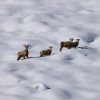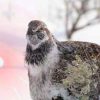Wyoming plants of bygone eras
We have all seen movies where characters step back in time. I had that sensation the first time I set foot in Swamp Lake, one of the largest peatlands in Wyoming, and found a suite of beguiling plants from long-ago times when the climate was colder than today.
Peatlands are wetlands in which stable groundwater inflow maintains the water table at or near the surface. The peat that builds up in them is a saturated organic soil that accumulates under cold, oxygen-free conditions, as slowly as a centimeter or less per century. Peatlands are refugia for plants and animals of bygone eras—denizens of colder climates.
The present-day plants at Swamp Lake and other well-developed Wyoming peatlands include an endowment of species that today live mostly in Alaska and Canada. While these plants of the far north are not federally endangered, they are rare in Wyoming.
Swamp Lake is unique for its size and number of rare peatland plants. Though botanists have documented hundreds of additional peatlands across Yellowstone National Park and national forests in the state, only a fraction like Swamp Lake harbor rare plants. Look closely, and these soggy microcosms offer a window into a distant world, one that otherwise exists many hundreds of miles away or far back in time.
These plants are like the tantalizing film clip previews that lure us to see more, ultimately helping us understand Wyoming landscapes. Scientists are discovering the importance of peatlands to watersheds, and probing their clues to the past as windows into the future.
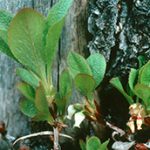
Bog bearberry (also called red fruit bearberry) Arctous rubra A small white-flowered shrub typical of the arctic. Located at only one alkaline Wyoming peatland and nowhere else; distant from nearest populations in Alberta.
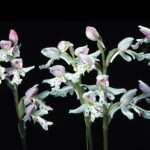
Round-leaved orchid Amerorchis rotundifolia A boreal plant at its southern limit in Wyoming, distant from the nearest populations in northwest Montana. It grows in forested peatlands, the rarest peatland type in Wyoming.

English sundew Drosera anglica A floating mat carnivorous plant with sticky leaves that trap insects. There is more of this plant in Yellowstone National Park than the rest of the state combined, a dwarf carnivore alongside the big carnivores of the park. It usually grows in peatlands that can be more acidic than car battery acid.
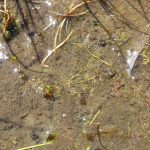
Lesser bladderwort Utricularia minor An underwater carnivorous plant that is scattered across northern latitudes. Trap doors on its little balloon-like “bladders” capture zooplankton. It grows in pools ringed by peat.
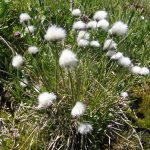
Arctic cottongrass Eriophorum callitrix An arctic-alpine plant stretching from Greenland to Wyoming. Grows in alpine peat in Wyoming, at its southern limits in the Beartooth Mountains and Wind River Range.
By Bonnie Heidel
Bonnie Heidel leads the botany program at the Wyoming Natural Diversity Database. Read more about her work with rare plants in Wyoming peatlands at www.fs.usda.gov/treesearch/pubs/55247.

